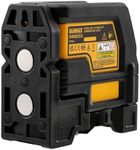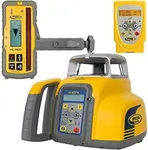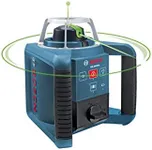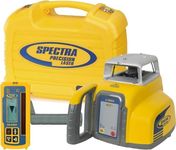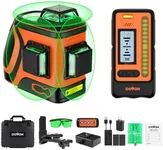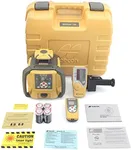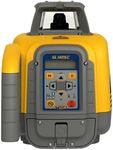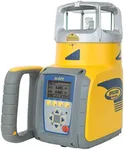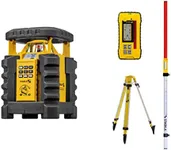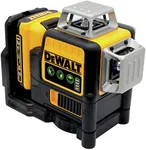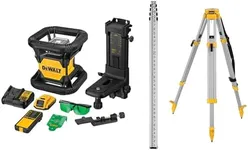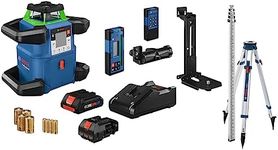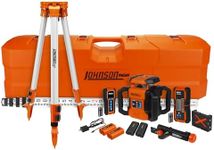Buying Guide for the Best Laser Level For Grading
Choosing the right laser level for grading can make a significant difference in the accuracy and efficiency of your projects. Laser levels are essential tools for ensuring that surfaces are level and properly aligned. When selecting a laser level, it's important to consider several key specifications to ensure you get the best fit for your needs. Understanding these specifications will help you make an informed decision and achieve the best results in your grading tasks.AccuracyAccuracy refers to how precise the laser level is in projecting a level line. This is crucial because even a small error can lead to significant issues in your project. Accuracy is usually measured in terms of deviation per distance, such as ±1/8 inch at 30 feet. For general grading tasks, an accuracy of ±1/8 inch at 30 feet is typically sufficient. However, for more precise work, you may want to look for a laser level with higher accuracy, such as ±1/16 inch at 30 feet. Consider the level of precision required for your specific projects to determine the appropriate accuracy.
RangeThe range of a laser level indicates the maximum distance over which it can project a level line. This is important because it determines how large an area you can work on without having to move the laser level. Ranges can vary significantly, from around 100 feet to over 1,000 feet. For small to medium-sized projects, a range of up to 500 feet is usually adequate. For larger projects, such as grading large plots of land, you may need a laser level with a range of 1,000 feet or more. Assess the size of your typical work area to choose a laser level with an appropriate range.
Self-LevelingSelf-leveling is a feature that allows the laser level to automatically adjust itself to ensure it is perfectly level. This is important because it saves time and reduces the risk of human error. Self-leveling laser levels are generally more convenient and accurate than manual ones. If you are working on uneven terrain or need to frequently reposition the laser level, a self-leveling model is highly recommended. For simpler tasks on relatively flat surfaces, a manual laser level may suffice, but self-leveling models are generally preferred for their ease of use and reliability.
DurabilityDurability refers to how well the laser level can withstand the rigors of a construction environment. This is important because grading often involves working in harsh conditions, such as dirt, dust, and moisture. Look for laser levels that are rated for water and dust resistance, typically indicated by an IP rating (e.g., IP54, IP65). Higher IP ratings mean better protection. Additionally, consider models with robust housing and shock resistance to withstand drops and impacts. If you frequently work in tough conditions, prioritize durability to ensure your laser level lasts longer and performs reliably.
Battery LifeBattery life indicates how long the laser level can operate on a single charge or set of batteries. This is important because longer battery life means less downtime and fewer interruptions during your work. Battery life can vary widely, from a few hours to over 30 hours. For extended projects, look for laser levels with longer battery life or models that offer rechargeable batteries. If you typically work on shorter tasks, battery life may be less of a concern. Consider your typical work duration and choose a laser level with sufficient battery life to meet your needs.
Beam VisibilityBeam visibility refers to how easily the laser line can be seen under different lighting conditions. This is important because better visibility ensures you can accurately see and follow the laser line. Beam visibility can be affected by factors such as the color and intensity of the laser. Green lasers are generally more visible than red lasers, especially in bright daylight. If you often work outdoors or in well-lit environments, a green laser level may be more suitable. For indoor or low-light conditions, a red laser level may be sufficient. Assess your typical working conditions to choose the right beam visibility.
